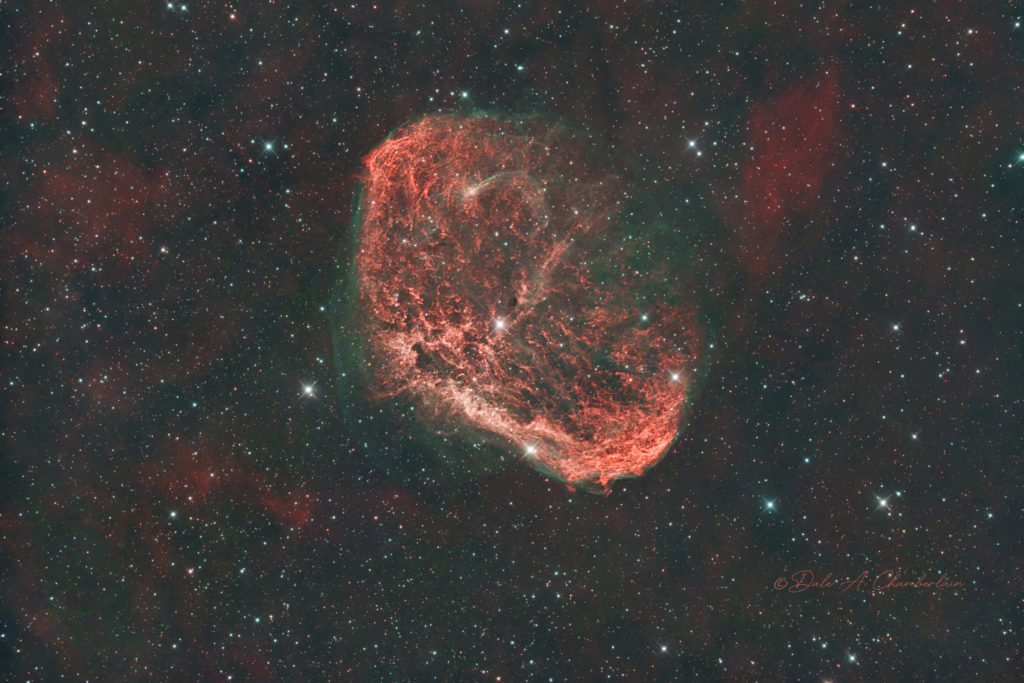
Object:
The Crescent Nebula (also known as NGC 6888, Caldwell 27, Sharpless 105) is an emission nebula in the constellation Cygnus, about 5000 light-years away from Earth. It was discovered by William Herschel in 1792. It is formed by the fast stellar wind from the Wolf-Rayet star WR 136 (HD 192163) colliding with and energizing the slower moving wind ejected by the star when it became a red giant around 250,000 to 400,000 years ago. The result of the collision is a shell and two shock waves, one moving outward and one moving inward. The inward moving shock wave heats the stellar wind to X-ray-emitting temperatures. The star is shedding its outer envelope in a strong stellar wind, ejecting the equivalent of the Sun’s mass every 10,000 years. The nebula’s complex structures are likely the result of this strong wind interacting with material ejected in an earlier phase. Burning fuel at a prodigious rate and near the end of its stellar life this star should ultimately go out with a bang in a spectacular supernova explosion.
Taken: July 2, 2021
Telescope: Astro-Tech 14” RC with Starizona Apex-ED L 0.65x focal reducer
Mount: Paramount ME II
Camera: ZWO ASI2600MC-Pro (cooled to 0C; Gain 100) Bin 1×1.
Guiding: ZWO ASI290MM-Mini with ZWO Off-Axis Guider (OAG)
Focuser: Moonlite Nitecrawler
Rotator: Moonlite Nitecrawler
Filters used: Optolong L-eNhance
Exposures: 42×300 seconds for a total exposure time of 3 hours 30 minutes; calibrated with 40 dark frames, 40 flat frames with 40 dark-flats.
Seeing Conditions:
Image capture and telescope control: Sequence Generator Pro and TheSkyX Pro
Processed with PixInsight, Photoshop CC 2022